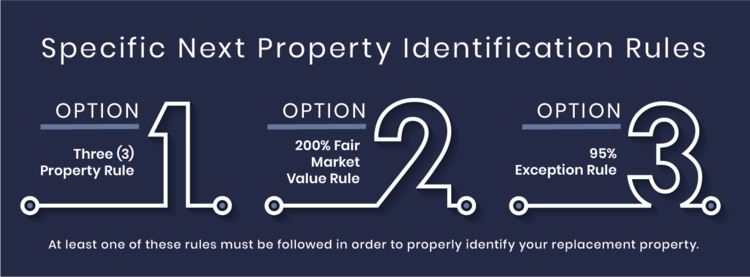Since Last Year, The 1031 Exchange And Potential Reform Has Been Discussed By The New United States Administration
We’ve featured 1031 Exchange expert, Bill Exeter, on a recent Next-Level Income Show episode as well. Recently I’ve fielded calls from multiple investors inquiring about 1031s and if it’s possible to utilize this while investing into one of our syndications.
My partner, Dan Handford, shares more in this blog post:
History Of The 1031 Exchange Tax Code
A 1031 exchange is a powerful tax deferral strategy that was originally started in 1921, a short 3 years after the first income tax code was enacted by Congress. Since then, the 1031 exchange has had a complicated history and has gone through several iterations. When the 1031 exchange was first enacted a century ago, it allowed for non-like-kind exchange provisions, but this element was quickly eliminated in 1924.
The current 1031 tax code allows like-kind real estate asset exchange to defer capital gain taxes. This can only be performed with real estate capital gains and there is even a strategy to be able to use this on your primary residence, which we will discuss later in this article.
Legacy Wealth Building
It is a fact that being able to defer capital gains is a great investment strategy since you are able to live off the cash flows of the property and then pay no federal income taxes on that income or the appreciation when you sell the asset. The key word here is “defer” capital gains. This means that at some point you would be paying those capital gains that have been deferred for however many years you continued to 1031 exchange into other like-kind assets.
What If I Told You That There Was A Way That You Could Defer The Capital Gains Forever?
Yes, this is possible if executed properly.
You would continue to 1031 exchange until you die and this would allow you to pass the property down to your heirs. At the time of death, when the property is transferred to your heirs, the basis in the property is reset to the current value of the property. Thus allowing you and your heirs to avoid the capital gains tax.
This type of legacy wealth building can be done for many generations. You should be talking to your heirs right now about this strategy so that when you pass, it can be continued in perpetuity to continue your legacy.
Timeline To Successfully Execute A 1031 Exchange
In order to successfully execute a 1031 like-kind exchange, there is a specific timeline that the IRS has laid out that must be followed.
Once you sell an asset, you have 45 days from the day of closing to identify the next asset that you will be acquiring. You are not allowed to “touch” or have access to the funds when you sell your asset. In order to facilitate this part of the transaction, the IRS requires you to use a qualified intermediary (accommodator) to facilitate the transaction.
In addition to the 45-day window to identify the next asset there is an 180-day window to close on the next asset. You have 180 days from the date you closed on the original asset to close on the next asset. If you don’t follow these timelines then you will be forced to pay the capital gains tax. The IRS is very strict with this timeline.

The Role Of A Qualified Intermediary (Accommodator)
The IRS will cause the 1031 transaction to be disqualified if you do not use a qualified intermediary. Not using a qualified intermediary will immediately cause you to have a taxable event. The 1031 intermediary will hold the proceeds when you sell your asset so that you never have access to those funds.
The main role of the intermediary is to facilitate the transaction from the time your prior asset sells until you close on your next asset. When you hire an intermediary, they will walk you through the proper steps and make sure that you are following the timeline outlined here.
The intermediary must be independent from you and cannot be related to you. You will enter into several agreements including a Like-Kind Exchange Agreement, Escrow Account Agreement, and other documents that allows the intermediary to assign, accept, give notice or direction to convey documents in the transaction process.
The time to engage a qualified intermediary is when you have a signed purchase and sale agreement from buyer when you are selling your existing asset. You can email me at dan@passiveinvesting.com if you need a referral to a reputable intermediary.
Specific Next Property Identification Rules
At least one of these rules outlined here must be followed in order to properly identify your replacement property:

Three (3) Property Rule
This rule allows you to identify up to 3 replacement properties and is the most widely used rule by most investors (including exchanging into an apartment syndication). You can exchange into 1, 2, or all 3 of the identified replacement properties with this rule, but most will only go into 1 due to timing complexities.
For those investors that want to identify more than 3 replacement properties they will use the 200% fair market value rule to identify.
200% Fair Market Value Rule
In this rule, you can identify more than 3 properties if the total aggregate value of all identified properties does not exceed 200% of the fair market value of the relinquished property.
For example, if you sold an asset for $1,000,000 then you would able to identify as many replacement properties as desired if the total value of all of the identified properties does not exceed $2,000,000 (200% of $1,000,000) in fair market value.
95% Exception Rule
For this rule, there is no limit on the number of identified properties or total value of those replacement properties as long as you actually acquire and close on 95% of the value identified.
This rule is the least common due to it’s challenges but can be used in the right circumstances.
There Is A Solution To 1031 Exchange Your Primary Residence
Your primary residence or vacation home are not qualified to perform a 1031 exchange but they may qualify under an exemption called Section 121 if handled a certain way. I know you wanted some exciting news here but this is a complicated structure which won’t work for most people.
You must have owned the property for at least 5 years and lived in it for 2 of those 5 years. The primary residence must be used as a rental in order to qualify. Here is an example:
A $250,000 (or $500K if married filing jointly) gain can be taken as tax free in a former primary residence. Anything above that would be taxed as capital gain and you can perform a 1031 exchange. You acquire a duplex for $400,000 ($200,000 per unit) and you live in one unit for 2 of the 5 years that you own it. You eventually sell it 5 years later for $800,000 ($400,000 per unit.) You would be able to completely avoid paying taxes on the unit that you used as a primary residence and shelter that $400,000. You would then need to perform a 1031 exchange on the remaining $400,000 to avoid paying capital gains tax.
Again, this is a very complex structure and you will need to setup your team of advisors to make sure this is executed properly.
Are You Able To Identify And Exchange Into An Apartment Syndication?
The simple answer here is, YES! Our group does accept 1031 exchange proceeds into our offerings. We must be aware of the incoming exchange prior to releasing our offering and a special structure called a tenants-in-common (TIC) would be formed to allow this to happen.
Due to the extra complexities when setting up the TIC structures and additional accounting expenses, the minimum for 1031 exchanging into one of our assets is $1,000,000.
If you are selling a property that has at least $1,000,000 in proceeds then be sure to let us know and we can give you the proper instructions to make it a successful transaction for both parties.
Case Study
You have a commercial building that you purchased 20 years ago and you are now ready to retire. You hate being a landlord and do not want to worry about managing your asset any longer. You originally purchased the asset for $500,000 and have now sold your asset for $3,000,000. Assuming there is no debt on the property (which is not a requirement but just make the math on this case study easy) and you didn’t take any depreciation tax benefit, your basis in the property is $500,000 so you would have a $2,500,000 ($3,000,000 – $500,000) capital gains tax exposure. You decide to 1031 exchange to defer the capital gains tax when you sell. You engage the intermediary prior to closing and identify 3 of our properties that we have coming up.
When we close on one of our properties the intermediary would transfer those proceeds on the day of closing. You would then not be required to pay the capital gains as it is being deferred. This would allow you to continue to generate cash flow from the 20% tax bill that you would have had to pay if you didn’t do a 1031 exchange. This is a $500,000 ($2,500,000 * 20%) savings that will allow you to continue to grow your wealth for many generations. At a preferred return of 7% this would generate an additional $35,000 per year in additional cash flows for you.
The process of successfully completing a 1031 exchange can be complicated but it is a very powerful tool that many Americans use to build their wealth and bolster their future net worth. If you have any questions about this process you can schedule a time to talk and I will do my best to assist you.
–Chris
Tagged: Group 3



Subscribe to The Next-Level Income Show